Solving Complex Steel Corrosion with A Turnkey Solution
Navigating a Corroded Bridge and Rising Materials Costs
A CASE STUDY
An elevated outdoor bridge at a medical center in the Southeast was in trouble. Humidity, temperature fluctuations, and chemical deicer exposure can cause steel corrosion, and that’s exactly what had happened to this bridge.
Corrosion and orange rust had become visible on the steel columns, base plates, bridge span trusses, floor decking, and guard railings. This raised serious concerns about the bridge's safety and ability to withstand the structural demands placed upon it. A structural engineer’s assessment determined that the bridge needed to be either reinforced or demolished and rebuilt.
The bridge connected the main hospital building with an adjacent medical office building (MOB) for which it served as a required means of egress. It was of utmost importance to ensure its structural soundness.
The client chose GHP to manage their entire project because of our ability to effectively handle complex projects through our combination of architecture, environmental, and construction services. By working with local contractors to develop a scope of work with the ultimate goal of rebuilding the bridge, GHP developed a comprehensive solution to demo the old bridge and design a more durable, corrosion-resistant replacement.
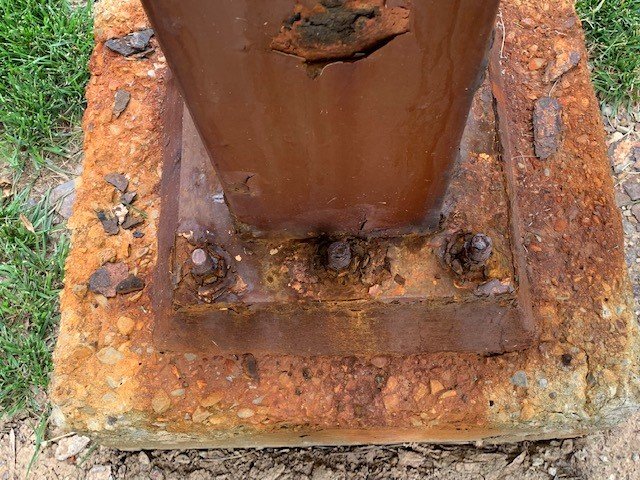
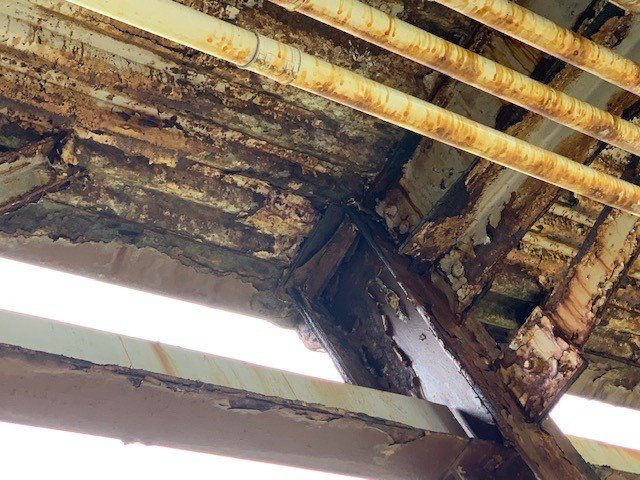
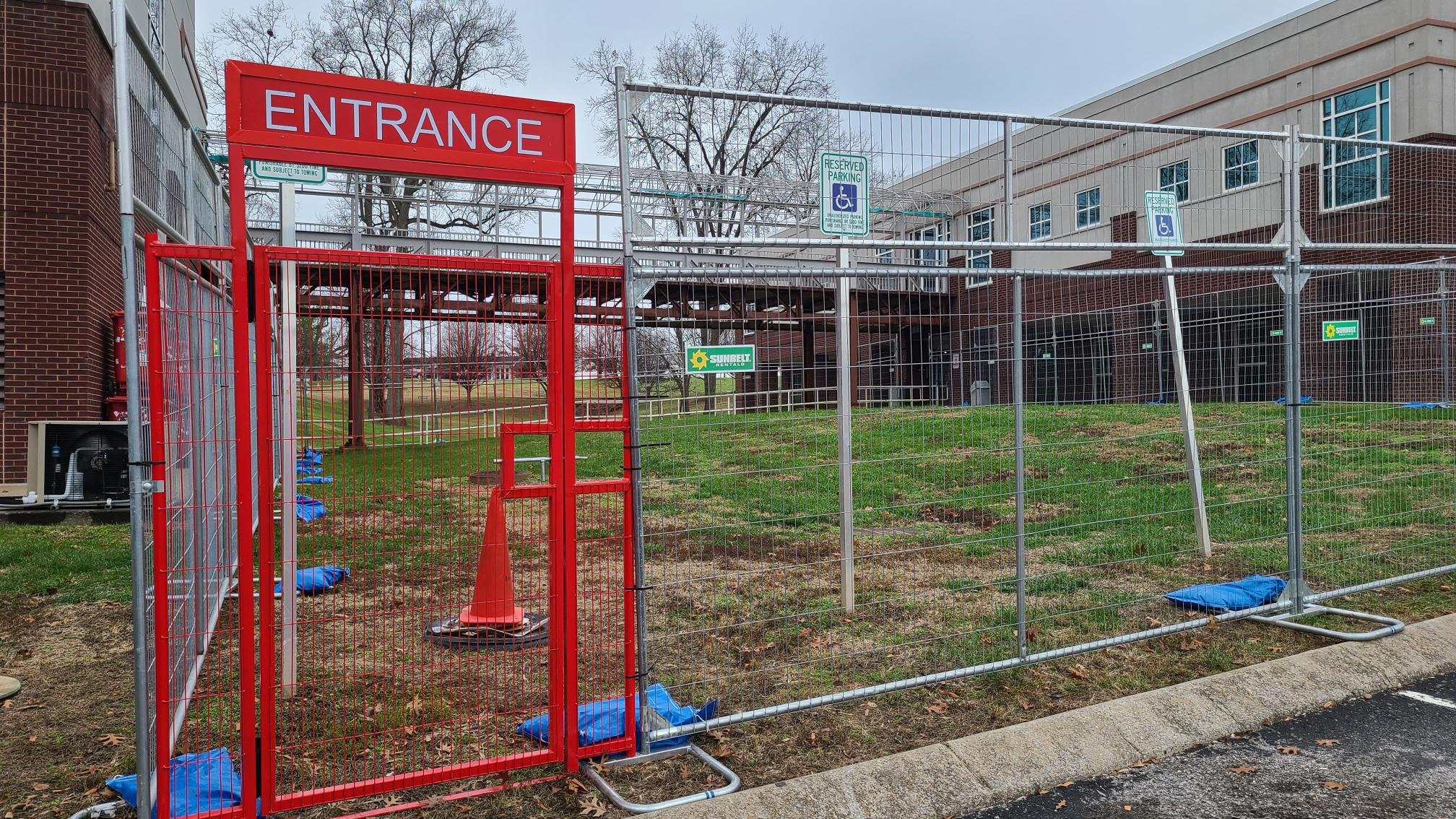
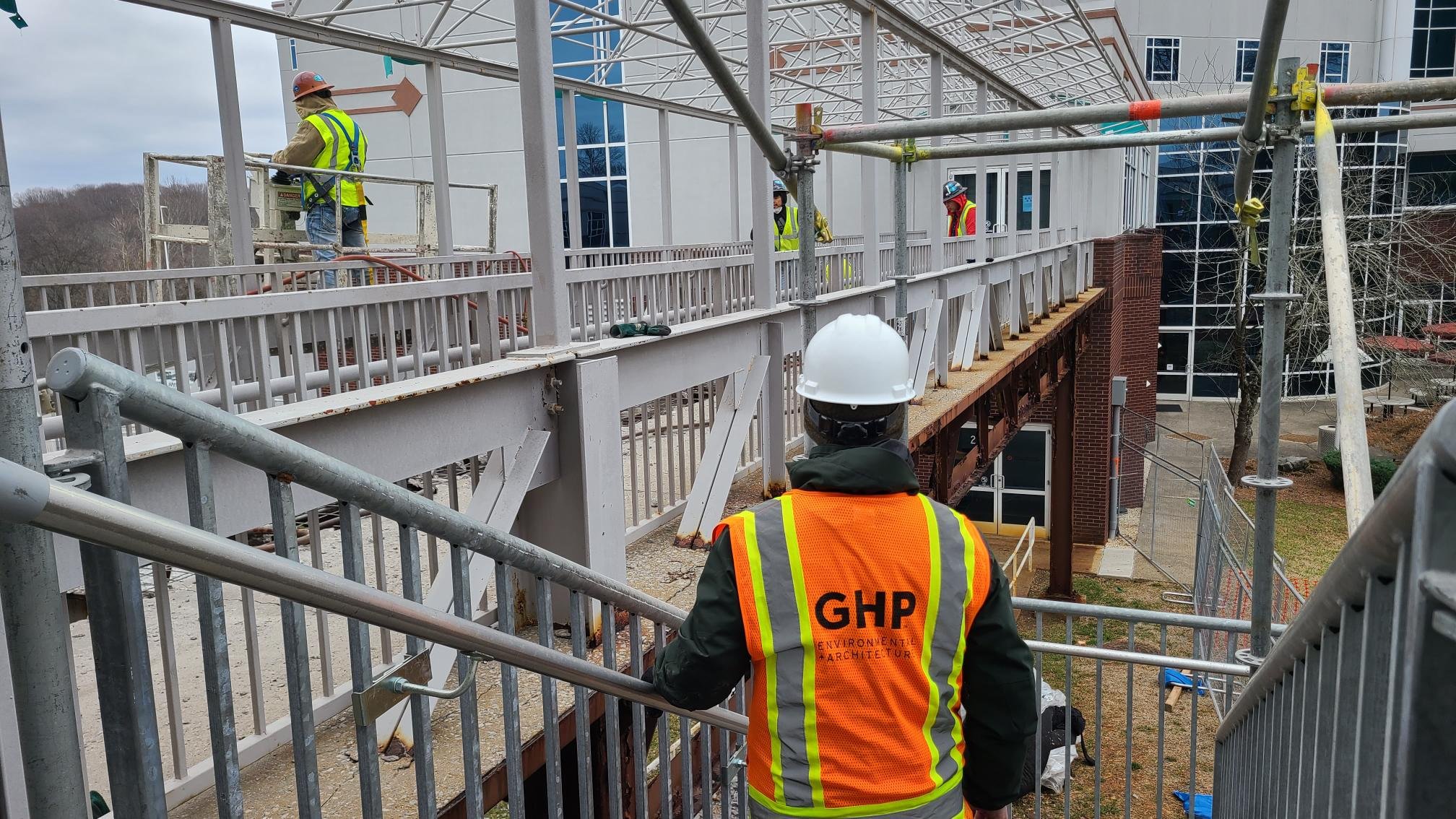
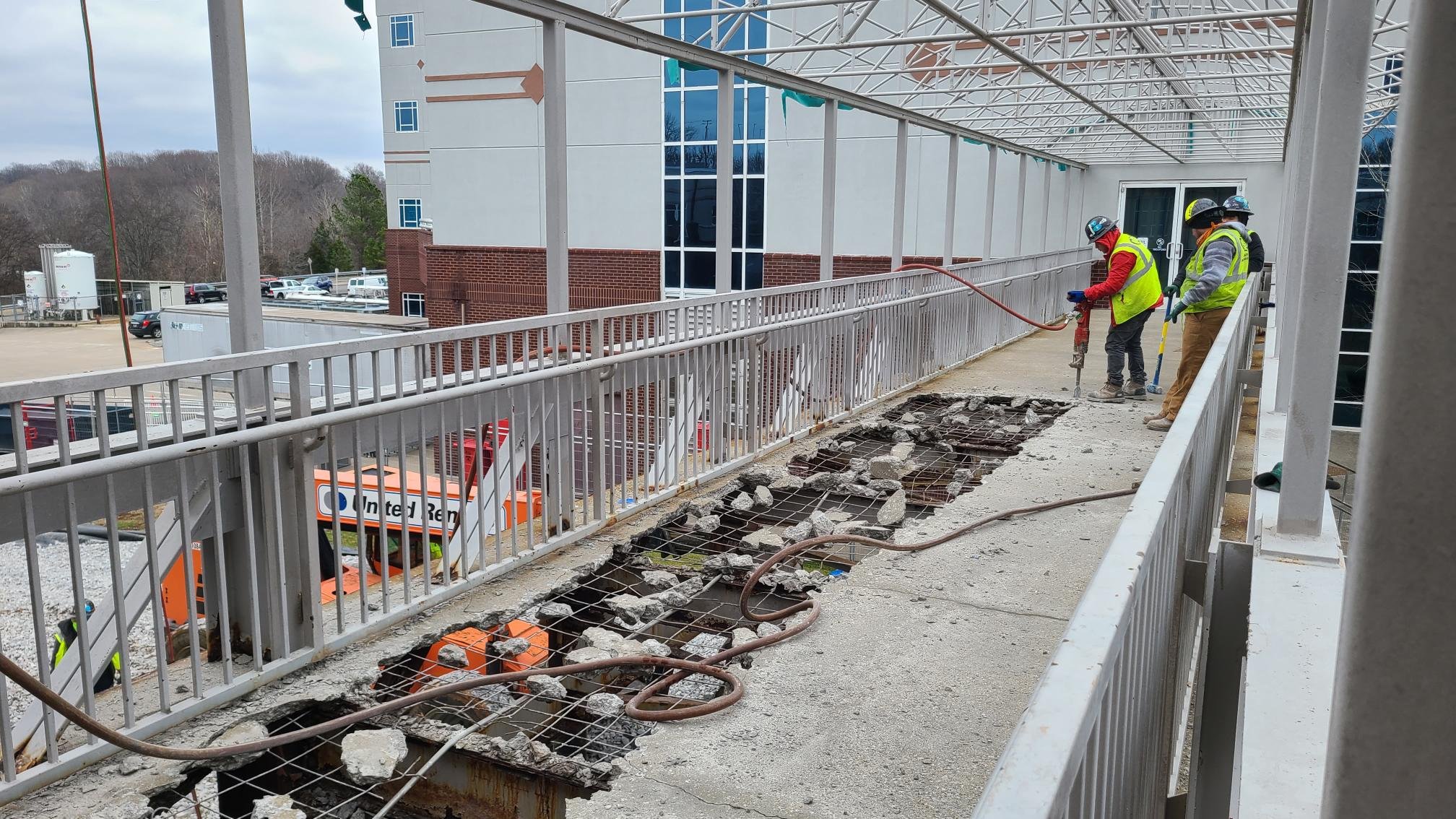
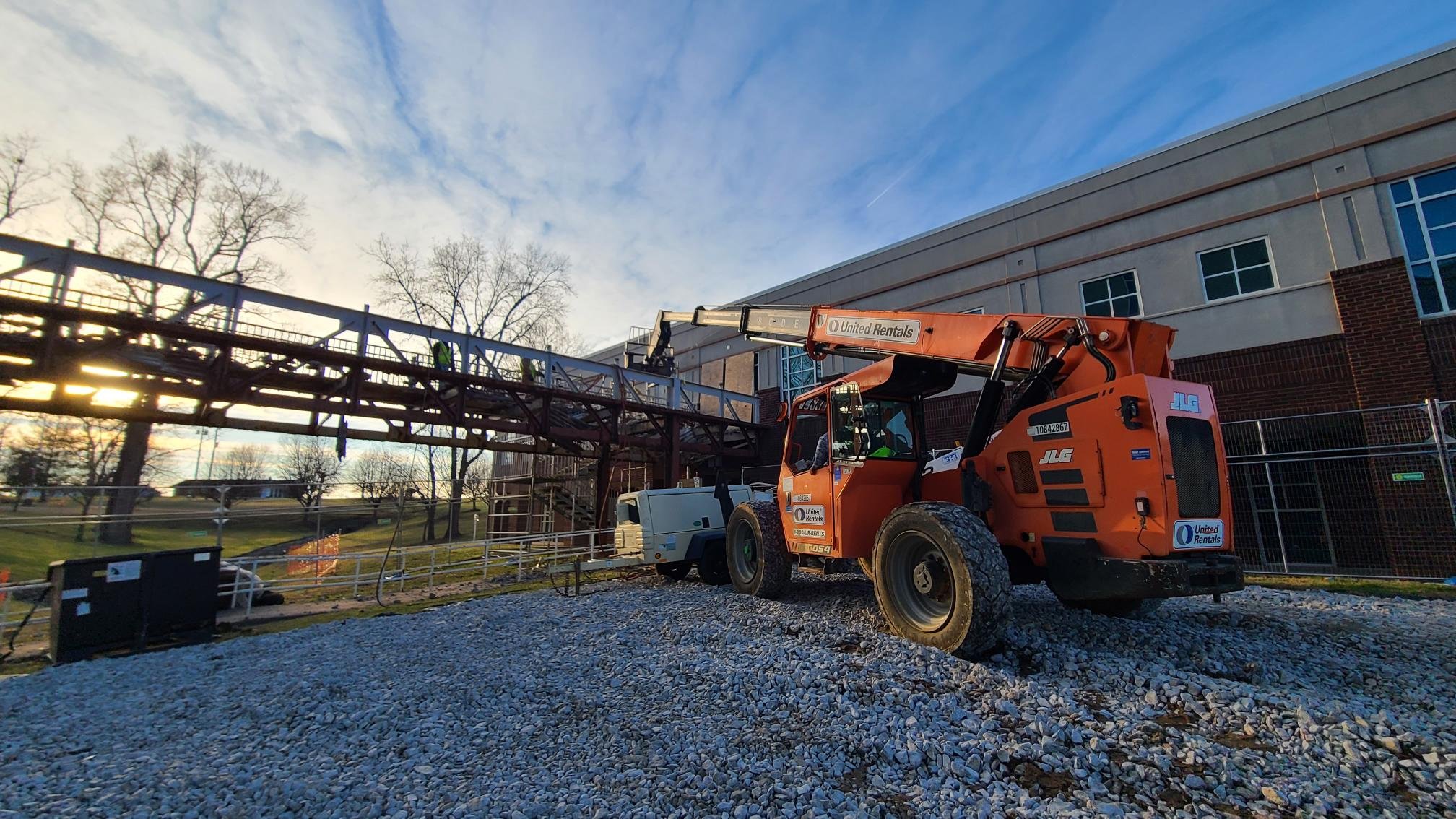
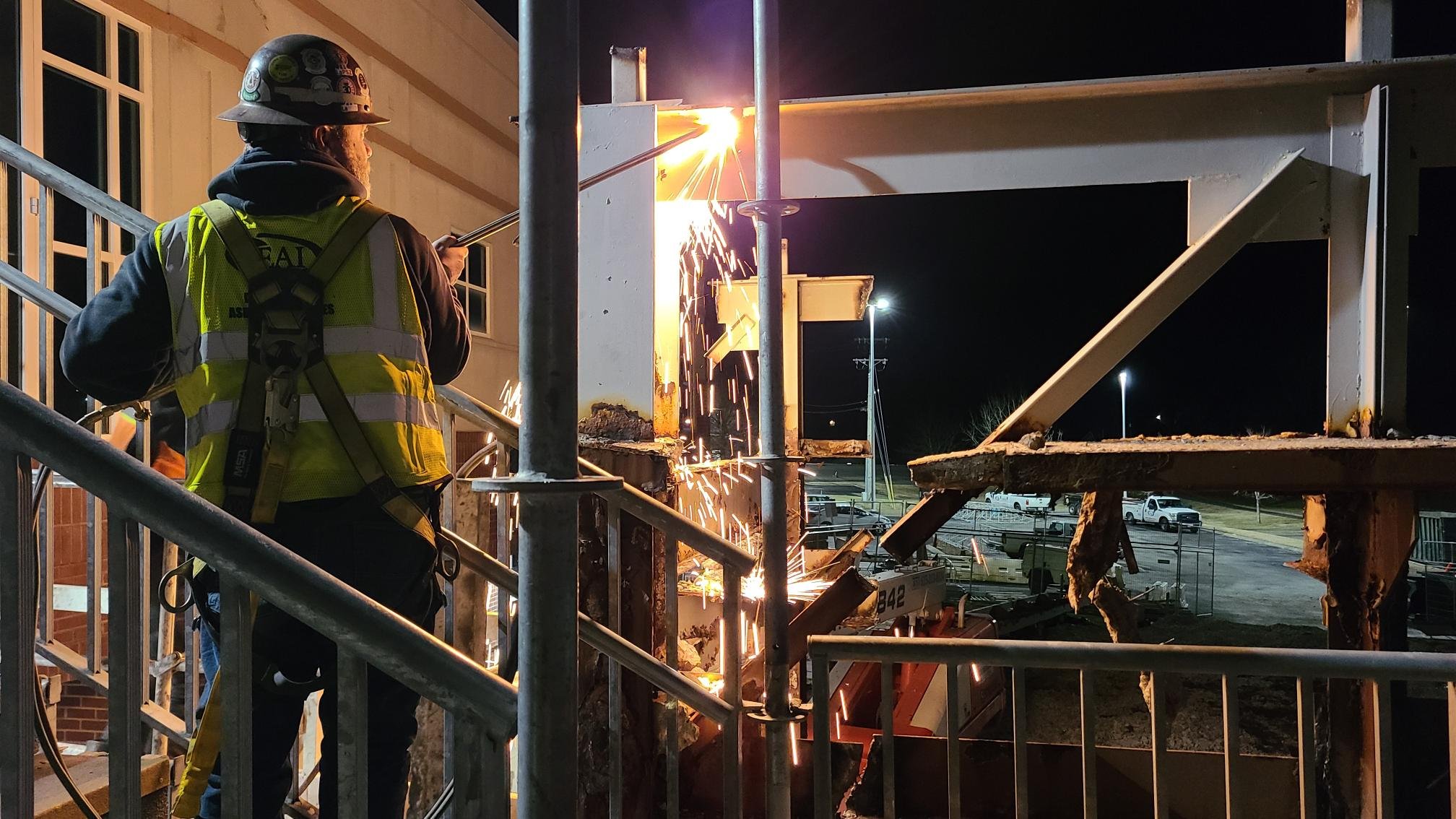
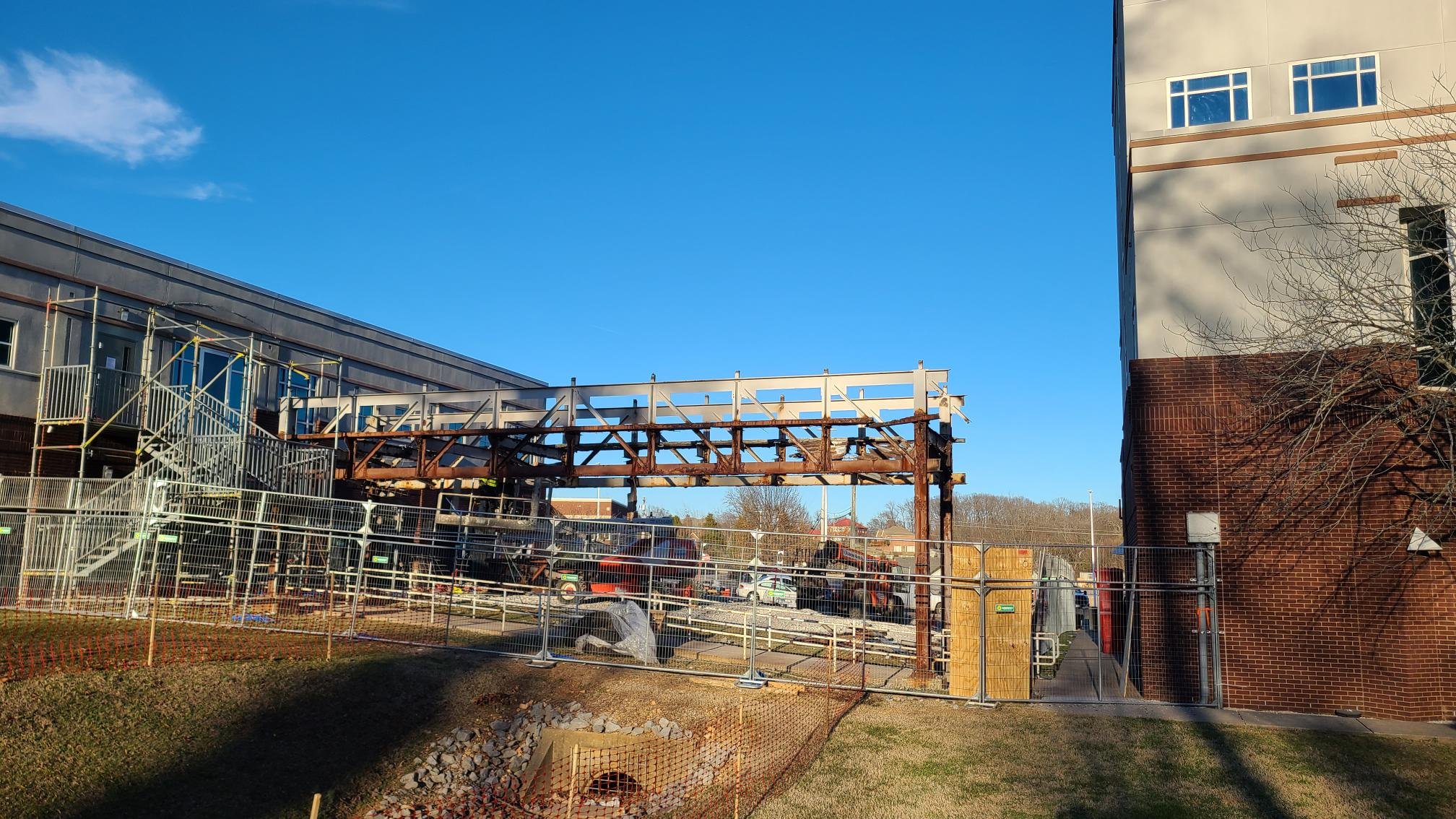
Project Highlights
Construction Timeline:
February - October 2023
Project Scope:
Demo existing open-air connector bridge
Install temporary emergency stair tower for required egress from MOB during the project
Design and construct new connector bridge
Project Outcomes:
Designed a connector bridge to blend contextually with the existing buildings that is covered and temperature-controlled for physicians and medical staff to utilize comfortably during all seasons
The new bridge will maintain the required emergency egress route from the MOB’s second floor
Client
The client was a hospital system located in the Southeast. The hospital will continue to be connected to a MOB via the new bridge at the second floor level of each building.
Challenges and Objectives
Several factors contributed to the complexity of this project.
There were extensive amounts of corrosion on the bridge's structural steel because of age, weather-related factors, and inadequate steel treatment that led to maintenance issues. Addressing the corrosion problem required a comprehensive solution, whether it involved reinforcing the existing structure or replacing it entirely with a new construction.
The elevated connector bridge plays a crucial role in allowing staff to move seamlessly between the hospital and MOB throughout the day. Ensuring that access remained uninterrupted during the project was a priority for both the client and GHP. In addition, the bridge also served as a required emergency egress route from the second floor of the MOB, so maintaining the MOB’s required emergency egress functionality during the project was essential for the safety of the building's occupants.
Lastly, the timing of the design and bidding process coincided with skyrocketing inflation and construction costs. The initial bids received were 50% higher than anticipated, posing a significant challenge to the project's financial feasibility. GHP needed to navigate the budget constraints and inflated construction costs to deliver a cost-effective solution without compromising quality or durability.
Solution
By employing a strategic and collaborative approach, GHP successfully managed the structural steel corrosion problem, maintained access between the two buildings, and ensured emergency egress functionality throughout the project.
GHP was able to:
Design a new enclosed, temperature-controlled pedestrian connector bridge. The new connector bridge replaced the heavily corroded existing structure. GHP designed the structure to withstand environmental factors and provide long-lasting structural integrity.
Provide a turnkey solution for the demolition of the existing open-air, steel bridge. We ensured that the process was safe and efficient. Before the demolition began, GHP conducted a thorough assessment to identify and address any potential issues with utilities or shared infrastructure, such as the fiber optic cabling beneath the bridge. We worked with a contractor to reroute these cables underground before beginning the demolition.
Maintain emergency egress functionality during the entirety of the project. GHP modified one of the physician suites to access a newly installed temporary exterior stairwell. This temporary modification ensured that the building's occupants would have a safe means of egress from the MOB while the bridge was being replaced. We maintained open communication with state and local fire marshals. This collaboration facilitated the approval of our plans and ensured they met safety and emergency egress standards.
Manage the client's budget and navigate inflated costs for construction materials. We identified that there was going to be a potential cost savings in placing a temporary hold on rebuilding the bridge and advised the client to wait due to supply chain and COVID disruptions. This solution also lessened the impact of product lead times on the construction process. GHP resumed construction of the new bridge in February 2023 to take advantage of the lower building material costs and improve the construction schedule.
Results
GHP completed the demolition of the existing bridge over an extended weekend. The construction of the new bridge is currently underway. Beyond the initial hold on the project, all other timelines are on track to ensure successful execution of the project.
GHP strategically planned and scheduled this project so it would remain within budget. The initial bid received exceeded the proposed budget by approximately 60%. Through careful management, we navigated through a volatile period of higher construction costs and ultimately obtained bids that were only 10% above the original budget.
The new pedestrian connector bridge will provide the users of both the MOB and adjoining hospital with an enclosed, temperature-controlled access way between the buildings. The new pedestrian connector bridge, as well as the steel structure, is enclosed and protected from seasonal elements, giving the bridge a much longer life span than its predecessor. The large windows along the pedestrian connector provide an open atmosphere and allow people to take in the surroundings of the campus like the open-air structure before it.
Conclusion
A crucial takeaway from this project is the importance of conducting regular visual inspections on exposed steel structures. This proactive approach allows for structures to be recoated and protected from potential risk of corrosion and damage caused by the elements. Doing these maintenance services can lead to time and cost savings down the road.
This project also serves as a testament to GHP's ability to take on architecture, environmental, and construction projects and deliver high-quality outcomes. Our strategic approach ensured the successful demolition and replacement of this essential connector bridge with one that will serve its purpose for a long time to come.
To learn more about navigating steel corrosion, check out our comprehensive guide to understanding structural steel failure.
